The Crucial/Micron M500 Review (960GB, 480GB, 240GB, 120GB)
by Anand Lal Shimpi on April 9, 2013 9:59 AM ESTEncryption Done Right?
Arguably one of the most interesting features of the M500 is its hardware encryption engine. Like many modern drives, the M500 features 256-bit AES encryption engine - all data written to the drive is stored encrypted. By default you don't need to supply a password to access the data, the key is just stored in the controller and everything is encrypted/decrypted on the fly. As with most SSDs with hardware encryption, if you set an ATA password you'll force the generation of a new key and that'll ensure no one gets access to your data.
Unfortunately, most ATA passwords aren't very secure so the AES-256 engine ends up being a bit overkill when used in this way. Here's where the M500 sets itself apart from the pack. The M500's firmware is TCG Opal 2.0 and IEEE-1667 compliant. The TCG Opal support alone lets you leverage third party encryption tools to more securily lock down your system. The combination of these two compliances however makes the M500 compatible with Microsoft's eDrive standard.
In theory, Windows 8's BitLocker should leverage the M500's hardware encryption engine instead of using a software encryption layer on top of it. The result should be better performance and power consumption. Simply enabling BitLocker didn't seem to work for me (initial encryption time should take a few seconds not 1+ hours if it's truly leveraging the M500's hardware encryption), however according to Crucial it's a matter of making sure both my test platform and the drive support the eDrive spec. There's hardly any good info about this online so I'm still digging on how to make it work. Once I figure it out I'll update this post. Update: It works!
Assuming this does work however, the M500 is likely going to be one of the first drives that's a must have if you need to run with BitLocker enabled on Windows 8. The performance impact of software encryption isn't huge on non-SandForce drives, but minimizing it to effectively nothing would be awesome.
Crucial is also printing a physical security ID on all M500 drives. The PSID is on the M500's information label and is used in the event that you have a password protected drive that you've lost the auth code for. In the past you'd have a brick on your hand. With the M500 and its PSID, you can do a PSID revert using 3rd party software and at least get your drive back. The data will obviously be lost forever but the drive will be in an unlocked and usable state. I'm also waiting to hear back from Crucial on what utilities can successfully do a PSID reset on the M500.
NAND Configurations, Spare Area & DRAM
I've got the full lineup of M500s here for review. All of the drives are 2.5" 7mm form factor designs, but they all ship with a spacer you can stick on the drive for use in trays that require a 9.5mm drive (mSATA and M.2/NGFF versions will ship in Q2). The M500 chassis is otherwise a pretty straightforward 8 screw design (4 hold the chassis together, 4 hold the PCB in place). There's a single large thermal pad that covers both the Marvell 9187 controller and DDR3-1600 DRAM, allowing them to use the metal chassis for heat dissipation. The M500 is thermally managed. Should the controller temperature exceed 70C, the firmware will instruct the drive to reduce performance until it returns to normal operating temperature. The drive reduces speed without changing SATA PHY rate, so it should be transparent to the host.
The M500 is Crucial's first SSD to use 20nm NAND, which means this is the first time it has had to deal with error and defect rates at 20nm. For the most part, really clever work at the fabs and on the firmware side keeps the move to 20nm from being a big problem. Performance goes down but endurance stays constant. According to Crucial however, defects are more prevalent at 20nm - especially today when the process, particularly for these new 128Gbit die parts, is still quite new. To deal with potentially higher defect rates, Crucial introduced RAIN (Redundant Array of Independent NAND) support to the M500. We've seen RAIN used on Micron's enterprise SSDs before, but this is the first time we're seeing it used on a consumer drive.
You'll notice that Crucial uses SandForce-like capacity points with the M500. While the m4/C400 had an industry standard ~7% of its NAND set aside as spare area, the M500 roughly doubles that amount. The extra spare area is used exclusively for RAIN and to curb failure due to NAND defects, not to reduce write amplification. Despite the larger amount of spare area, if you want more consistent performance you're going to have to overprovision the M500 as if it were a standard 7% OP drive.
The breakdown of capacities vs. NAND/DRAM on-board is below:
| Crucial M500 NAND/DRAM Configuration | |||||||||||
| # of NAND Packages | # of Die per Package | Total NAND on-board | DRAM | ||||||||
| 960GB | 16 | 4 | 1024GB | 1GB | |||||||
| 480GB | 16 | 2 | 512GB | 512MB | |||||||
| 240GB | 16 | 1 | 256GB | 256MB | |||||||
| 120GB | 8 | 1 | 128GB | 256MB | |||||||
As with any transition to higher density NAND, there's a reduction in the number of individual NAND die and packages in any given configuration. The 9187 controller has 8 NAND channels and can interleave requests on each channel. In general we've seen the best results when 16 or 32 devices are connected to an 8-channel controller. In other words, you can expect a substantial drop off in performance when going to the 120GB M500. Peak performance will come with the 480GB and 960GB drives.
You'll also note the lack of a 60GB offering. Given the density of this NAND, a 60GB drive would only populate four channels - cutting peak sequential performance in half. Crucial felt it would be best not to come out with a 60GB drive at this point, and simply release a version that uses 64Gbit die at some point in the future.
The heavy DRAM requirements point to a flat indirection table, similar to what we saw Intel move to with the S3700. Less than 5MB of user data is ever stored in the M500's DRAM at any given time, the bulk of the DRAM is used to cache the drive's OS, firmware and logical to physical mapping (indirection) table. Relatively flat maps should be easy to defragment, but that's assuming the M500's garbage collection and internal defragmentation routines are optimal.



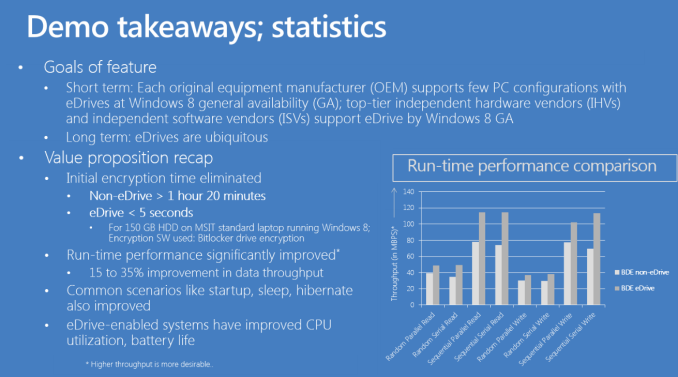
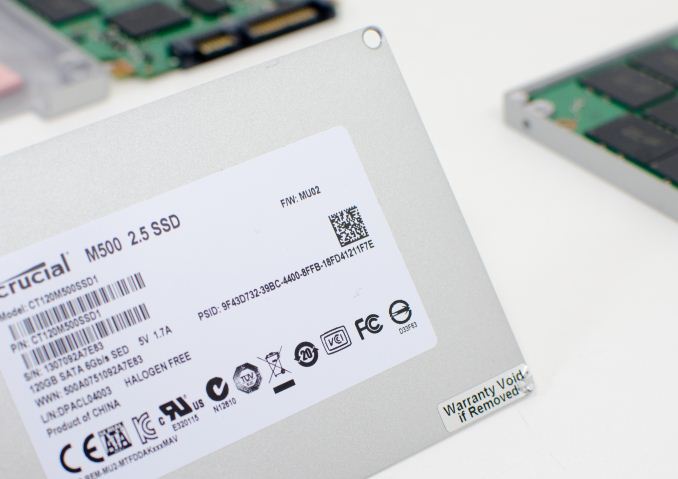
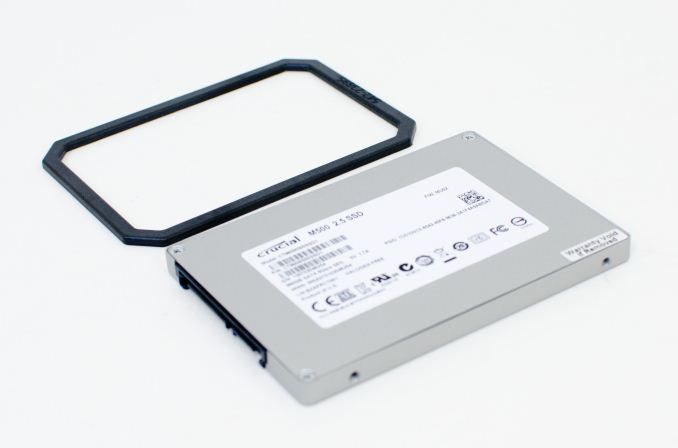

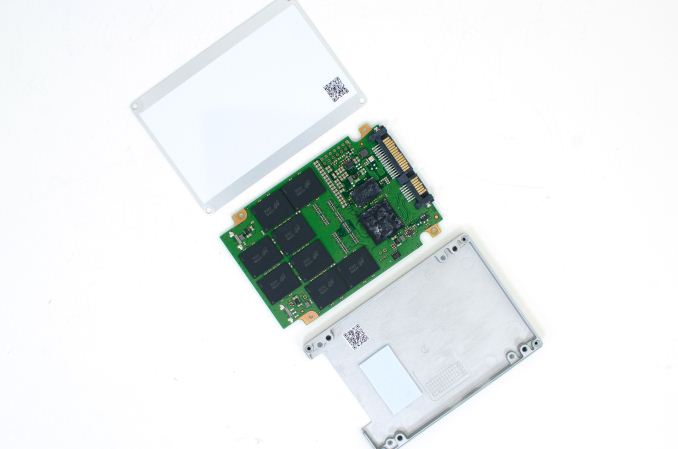
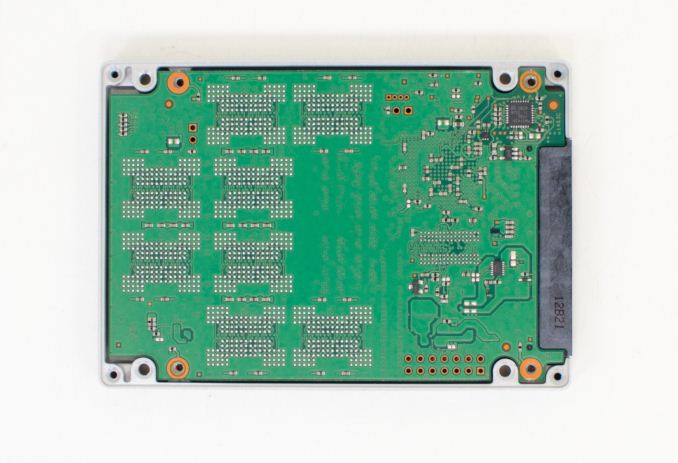
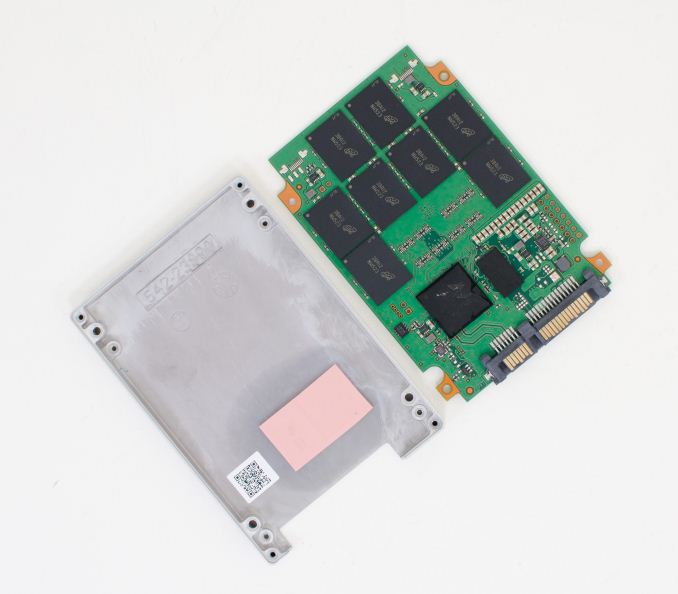








111 Comments
View All Comments
gochichi - Wednesday, April 10, 2013 - link
Crucial is in a unique position. I don't think people care about performance numbers. What we know is that SSD s are either a nightmare or a dream. What we want is a dream. People want simple understandable marketing.My favorite SSD so far is a Monster Digital 240gb Daytona. It has been absolutely flawless. But the 120 gb version is a lemon. Reselling the drive would never happen. Monster Digital is probably not going to be a player in the SSD market going forward.
My point is, what's at stake here is who's the next Seagate? The next Western Digital? Of SSDs. Samsung can do no wrong, much like Apple. And yet this weird little company called Crucial has enjoyed tremendous on-the-street notoriety with their M4 series.
As far as I can tell the M4 is a little outdated. My question is why not release an M5? Why 500? Why waste so much consumer goodwill? Is it just that this drive isn't good? Or not good enough for proper successorship?
I don't know why I've purchased crucial drives before, it started with a little 64gb m4. The I just trust the m4 line. My point is why does Crucial carry bad models and why so many confusing numbers? The m4 is a golden opropportunity. Where's that trusty m5 follow up? Samsung has understandable generations and model lines. They're making sure they're the Western Digital of SSD. Why isn't Crucial doing similar?
Solid State Brain - Wednesday, April 10, 2013 - link
The reason why it's M500 and not M5 is probably because of Plextor:http://www.plextor-digital.com/index.php/en/M5-Pro...
Kristian Vättö - Thursday, April 11, 2013 - link
Crucial isn't exactly small, they are a subsidiary of Micron. As said above, Plextor has M5S and M5 Pro SSDs so M5 would have been very confusing, hence the M500. The OEM version of M4 was C400, so it's actually not that confusing.FunBunny2 - Thursday, April 11, 2013 - link
-- My point is, what's at stake here is who's the next Seagate? The next Western Digital? Of SSDs.Getting harder to say. The three well known public companies doing SSD (mostly) as such, STEC, OCZ, Fusion-io, have been missing all targets for a least a couple of quarters. Violin may or may not IPO in the next few months.
The reasonable answer is that there won't be a Seagate or WDC for SSD. It's well understood how to take commodity HDD to Enterprise Drive, using tighter QA and some incrementally better parts at modest cost. With SSD, as this review shows, "progress" in feature shrink isn't improving any of the factors at lower cost. It is quite perverse. The NAND suppliers will come to dominate consumer SSD, with performance asymptotically approaching a bit better than current HDD, with a price premium. Look for TLC, with huge erase blocks, long latencies, slowing controllers (having to do all that much more work to get around the NAND).
Enterprise SSD will likely fade away, to be replaced by NAND arrays, along the line of the Sun/Oracle device, which has been around for a few years.
dilidolo - Wednesday, April 10, 2013 - link
Everyone else mentioned Super Cap in M500 but not here. I just want to confirm if it's true.Tjalve - Friday, April 12, 2013 - link
Therte seems to be capacitors on the drive. But i would like to know aswell.klmccaughey - Thursday, April 11, 2013 - link
The pricing is WAY off. £274 ($420) for 240GB one in the UK!!! They must be mad.philipma1957 - Friday, April 12, 2013 - link
the 960gb was 570 usd at amazon. at your price x 4 it would be $1680. that is a lot of value tax.philipma1957 - Friday, April 12, 2013 - link
I just went on amazon uk the 240gb is 168 pounds the 480gb is 321 pounds. some what better. then the price you foundKarol Bulova - Saturday, April 13, 2013 - link
I own Samsung 840Pro (it had cash-back recently) so I welcome this comments from articles on Anandtech.'The 840 Pro does an amazing job with 25% additional spare area however, something that can't be said for the M500. '
'if you simply set aside 25% of the total NAND capacity as spare area' performance improves'
I am running Win8 64bit with TRIM enabled - what is unclear for me though, is:
1. is spare are just free not occupied space on the HDD (e.g. when it is not full)
2. or is it just un-formatted partition (without a filesystem - thus no files expect for header)
3. or there shouldn't be any partition at all - and drive will somehow figure it up that I just magically allocated spare area
Or is there some utility for Samsung to do spare area? Please advice - from what I understand I should reinstall windows and choose 192GB as my main drive capacity instead of full!